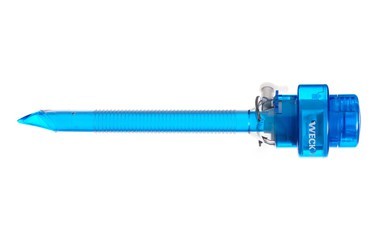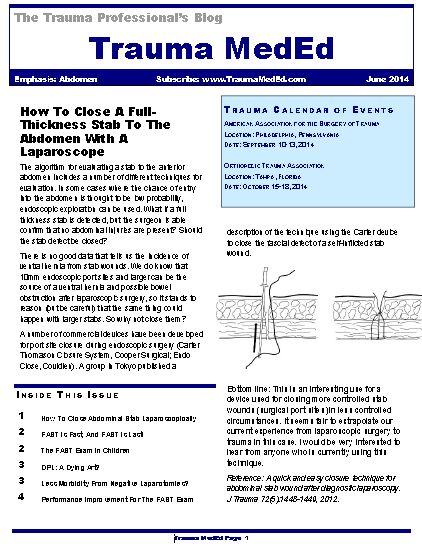Kenji Inaba and colleagues have done a lot of work on tension pneumothorax (tPTX) in the past few years. They’ve looked for the best devices and the best positions on the chest to quickly and effectively treat this emergency. Now, they’ve published a study on using what looks like a “better mousetrap” for relieving tension physiology.
Previous work from this lab has shown that up to a quarter of needle thoracostomies fail within 5 minutes due to mechanical reasons. This leaves a small window for insertion of the real chest tube. And even though much of the pressure may be relieved, a significant amount of air may be left in the chest, impeding recovery from PEA arrest.
They looked at the use of a 5mm laparoscopy port for relief of tension pneumothorax in Yorkshire swine. The exact size of the pigs was not listed, but these animals weigh 25 pounds at 6 weeks of age, and the pictures in the article show a reasonable sized animal. I’m not sure they were 70kg, though.
Here are the factoids:
- Five animals were used, and 30 episodes of tPTX and 27 episodes of PEA arrest from tPTX
- Tension pneumothorax was created by insufflating the chest with CO2 using a 10mm laparoscopic trocar
- tPTX was completely relieved by insertion of the 5mm trocar in 100% of trials, with all physiologic measures returning to baseline within 1 minute
- Circulation was restored to normal within 30 seconds in 100% of trials
- There was no damage to heart or lung from trocar placement in any of the 5 animals

Bottom line: Once again, Inaba and crew have added some interesting tidbits to our knowledge base. You already know I’m not a fan of animal studies like this, but this one lays the ground work for some work in humans. We still need to know how the “usual American body habitus” will affect the use of this device. The only downside is the expense of the trocar, which is a lot more than a simple long needle. But if it is as efficacious in humans as it is in pigs, it may be worth it!
Related posts:
- Video: needle compression of the chest
- The right way to treat tension pneumothorax
- Advanced needle thoracostomy – for obese patients
Reference: Standard laparoscopic trocars for the treatment of tension pneumothorax: A superior alternative to needle decompression. J Trauma 77(1):170-175, 2014.


